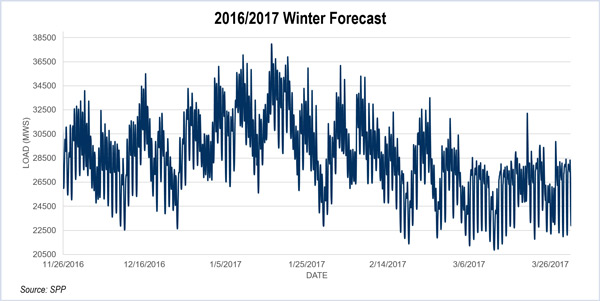By Tom Kleckner
SPP says improved wind forecasting and coordination with gas pipelines have the RTO well prepared for the coming winter.
SPP engineer Jon Langford said during the RTO’s annual winter preparedness emergency operations call last week that its wind forecaster, Energy & Meteo Systems, has developed a full icing forecast. The forecasting tool, to be delivered in November, compensates for freezing temperatures that shut down wind turbines’ directional systems.
“The wind farm works, but the equipment that turns the turbine [in the direction of] the wind stops working,” Langford explained.
He said SPP’s winter peak load is expected to near 38,000 MW, “if we get close to what we did last year.” That number is less than half of the footprint’s 83,465 MW of capacity.
The winter emergency operations plan is available online but requires a password.
C.J. Brown, manager of SPP’s balancing-authority functions, reminded stakeholders of the Oct. 1 switch to the new gas-day timeline as a result of FERC Order 809. (See “New Gas-Day Nom Process on Track for Oct. 1 Go-Live,” SPP Briefs.) Market participants will now submit their bids and offers by 9:30 a.m. instead of 11 a.m.
“From SPP’s perspective, this presents a good step in the direction where we can be a little more efficient and a little earlier,” Brown said. He also said the RTO has increased its communications with gas suppliers.
“We sure don’t want to rest on our capacity margin and our infrastructure,” Brown said.
Jeff Johnson, a meteorologist for Schneider Electric, predicted below-normal temperatures this winter for SPP’s footprint. He said a slight warming trend in February would be followed by more cool weather in March.
Johnson said the Pacific Decadal Oscillation (PDO), a pattern of oceanic climate variability extending from Alaska to Hawaii, will result in a winter similar to the 2013-14 and 2014-15 seasons.
The PDO “tends to produce a more northerly component to the jet stream,” he said. “That helps deliver more Arctic air out of Canada into the central part of the country.”







